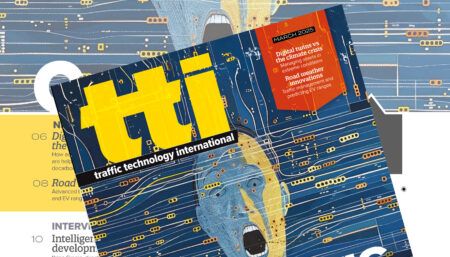Norwegian traffic technology and tolling systems supplier Q-Free has successfully demonstrated the vehicle location capabilities of its current range of Cooperative ITS (C-ITS) equipment during trials in Australia.
In tests carried out with Roads and Maritime Services (RMS), the transport authority for the state of News South Wales, Q-Free’s systems gave second-by-second positional information on heavy vehicles maneuvering at intersections. Repeated testing has proven the company’s Universal ITS Station’s lane-level positioning capabilities. The trials showed how Q-Free’s C-ITS systems can provide to-the-lane accuracy and open the way to future C-ITS applications where, for example, drivers need to be warned of oncoming vehicles turning into a side road in the face of oncoming traffic
Q-Free has been at the center of C-ITS development for the last decade, with an involvement in numerous research projects, standardization issues, and pilot product designs. The company is now offering its knowledge to emerging national pilot projects and trans-national corridors, while also helping prepare current ITS deployments for the evolution to ‘connected’ C-ITS methodologies. Through its expertise in tolling systems, Q-Free has many years of experience in vehicle-to-infrastructure (V2I) communications, and has been at the forefront of developing C-ITS standards and specifications. The company has a proven track record of support on the authorities’ side of standards and projects, and can help the infrastructure side in specifying open standards that avoid vendor lock-in.
Q-Free has been a central supplier of C-ITS technology and equipment to numerous European R&D trials and projects over the last 10 years. This started in the European Commission’s (EC) CVIS project, where Q-Free supplied several hundred vehicle and roadside ITS stations. A second generation was developed for the EC-funded eCoMove project, and recently the company has completed its third generation of pilot products, the Universal ITS Station, which can function as a vehicle-mounted or roadside device. Both units are powered via a single Power-over-Ethernet (PoE) cable and can be used as standalone or internet-connected devices via a built-in 3G/LTE, or a wired connection.
“C-ITS has the potential to reduce road crashes by providing clear audible and visible warnings to drivers when they approach road hazards. But accurate vehicle positioning and knowledge of their intentions is going to be critical,” explained Q-Free’s chief technologist, Knut Evensen.
“The presentation of the successful positioning results concluded our first commercial C-ITS order. We look forward to participating in further C-ITS trials in Australia, both with RMS and with other Australian roads authorities.”




